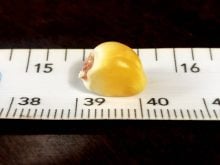In early July, Albert Tenuta confirmed low incidences of tar spot in Elgin, Chatham-Kent and Essex counties.
Tenuta, a field crop extension plant pathologist with the Ontario agriculture department, noted the initial positive through his West Elgin North American Tar Spot Trials, which run in conjunction with those of United States colleagues.
Why it matters: Overwintering tar spot is now expected, so scouting for the disease should be part of producers’ management strategy.
Read Also

The forced Japanese-Canadian farmers of the Second World War
Manitoba’s sugar beet farms drew on displaced Japanese-Canadians from B.C. during the Second World War
“It was a low incident; there were a few lesions at that point,” he says. “Now we’re starting to pick up more lesions below the ear leaf. But again, that’s maybe one to two plants here and there.”
Tenuta has performed corn-on-corn trials on his West Elgin plot since 2021, indicating this year’s source overwintered rather than blew in via spores.
“All of the ones we’re seeing right now, I would suspect, are the results of tar spot now being a regional issue,” says Tenuta. “It’s overwintering in southwestern Ontario on an annual basis, so you can pretty well predict the fields or areas it will show up in based on previous history.”
Essex, Chatham-Kent and Elgin counties are at higher risk of overwintering tar spot. In 2021, disease pressure resulted from spores flowing in from Wisconsin, Michigan, Indiana and Illinois.
“Being a new disease, we never should have had as much in 2021 as we did if it depended on overwintering or Ontario sources,” says Tenuta. “A lot of that came from the U.S. This year, so far, that hasn’t been the case, but it may change as things move on.”
Tenuta advised Eastern Ontario and Quebec corn producers to watch for tar spot as the disease moves into New York and Pennsylvania, making transmission across Lake Ontario and the St. Lawrence River possible.
Scouting plays a critical role in getting ahead of disease and pest pressures, he says. Growers should pay particular attention to fields with strong potential for infection.
“Corn on corn, high-risk situations with corn residue and highly susceptible or susceptible hybrids – in those cases, you could utilize the Tarspotter app to give an idea of risk.”
Tarspotter employs GPS to assess temperature, dewpoint, humidity, precipitation and crop phenology to generate a site-specific prediction for disease potential and pressure during corn flowering. The ideal disease management window occurs during the V8 to R4 growth stage.
“Once you’ve got it in the field and starting, it can move quite quickly, or it can slow down, as we saw in 2022,” says Tenuta.
“We got the rain stirring pollination, which we really needed, and it was dry prior to that. Then we got the rains through tassel, and that made the crop.”
Numerous and strong storms brought much-needed moisture but conditions are now ideal for tar spot development due to persistent rains, heavy dew and high humidity.
Watch for DON
In 2022, Tenuta’s trials had a 19 to 20 bushel yield advantage due to a well-timed and effective fungicide application. If the high moisture rain cycle continues through late July, incidents of deoxynivalenol (DON), fusarium/gibberella, and vomitoxin could also increase pressure on producers, he said.
“We don’t have anything that’s totally resistant to tar spot, but we have some very good hybrids that perform well under even high tide threshold development.”
The West Elgin trial site includes a hybrid nursery as a testing ground, where Tenuta works with seed companies and government to develop tar spot-resistant hybrids.
“One critically important thing is that we maintain the ability to do our breeding in the province (and) our screening and development under Ontario conditions and Ontario disease pressure.”
Tenuta and corn breeders are now working with researcher Aida Kebede of Agricultural and Agri-Food Canada on hybrid crosses developed at the International Maize and Wheat Improvement Centre in Mexico that may have novel genes for tar spot resistance.















